In pictures: Anglo-Saxon exhibits from Lyminge go on show
- Published
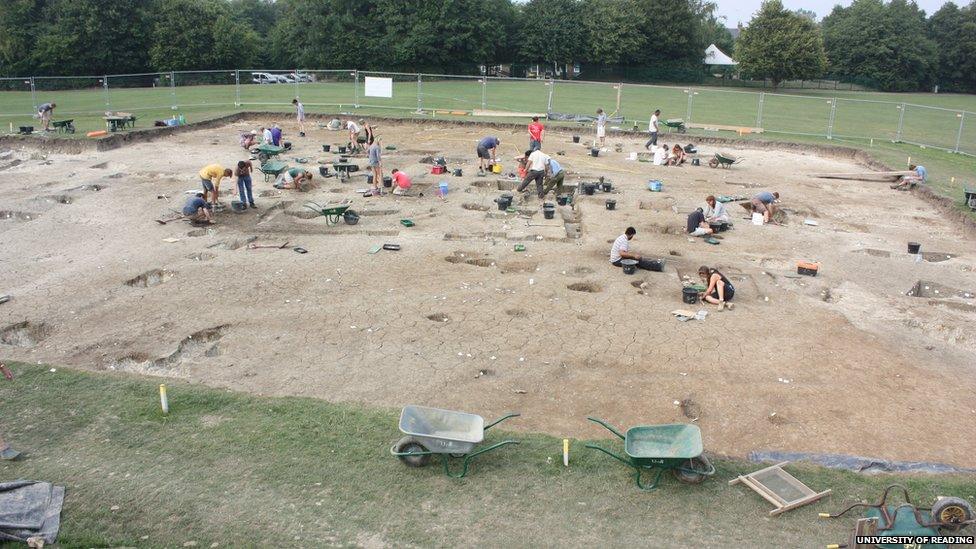
An exhibition about the excavation of an Anglo-Saxon monastic site under Tayne Field in the heart of Lyminge, Kent, has opened to the public at Dover Museum, where it will be for the next two months.

The exhibition, called Pagans to Christians: the first monasteries in Anglo-Saxon Kent, follows the work of archaeologists from the University of Reading who, along with local volunteers, archaeological societies and university students, have been excavating the site since the summer of 2012.
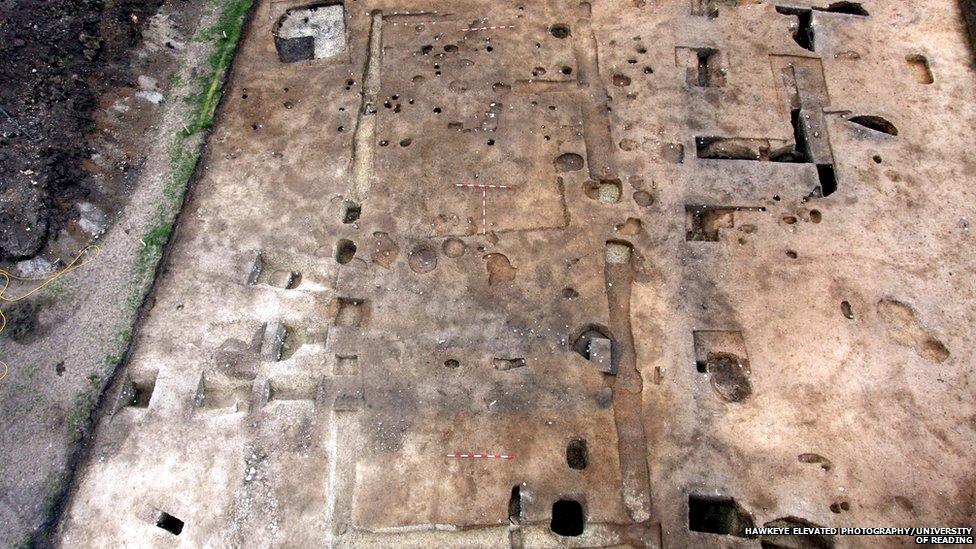
The team uncovered a rare Anglo-Saxon banqueting hall which would have seated 60 guests - the first discovery of its type for more than 30 years.

A decorated copper mount from a gilded horse harness of a type only previously found in graves belonging to the Anglo-Saxon warrior elite, and dating to AD525-575, was found at the site.
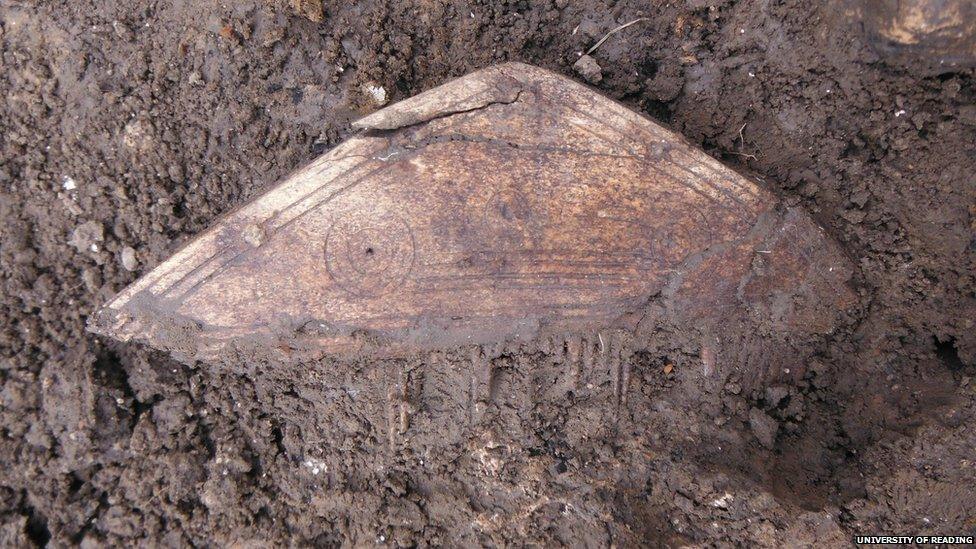
An Anglo-Saxon triangular bone comb was also among the discoveries.
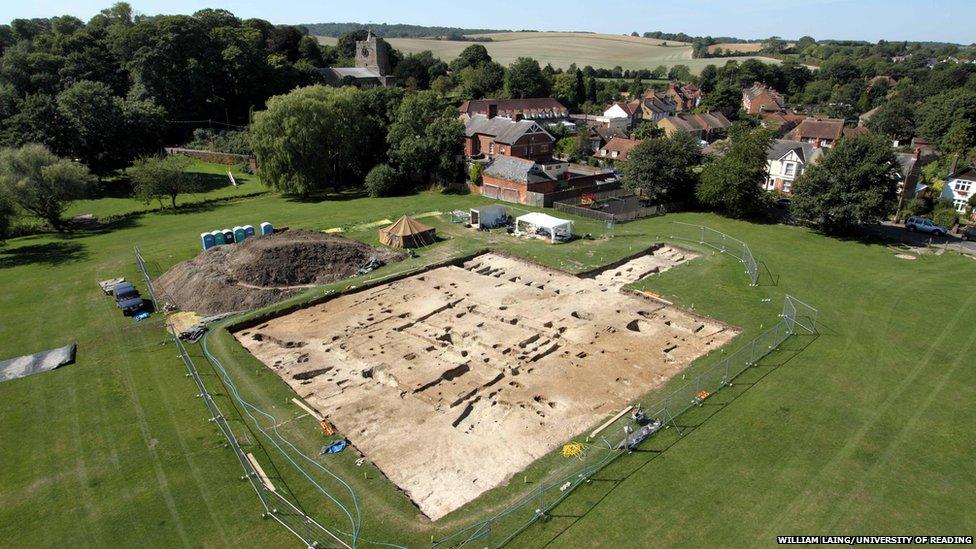
An aerial view of the excavations shows the outlines of the large rectangular royal feasting hall.
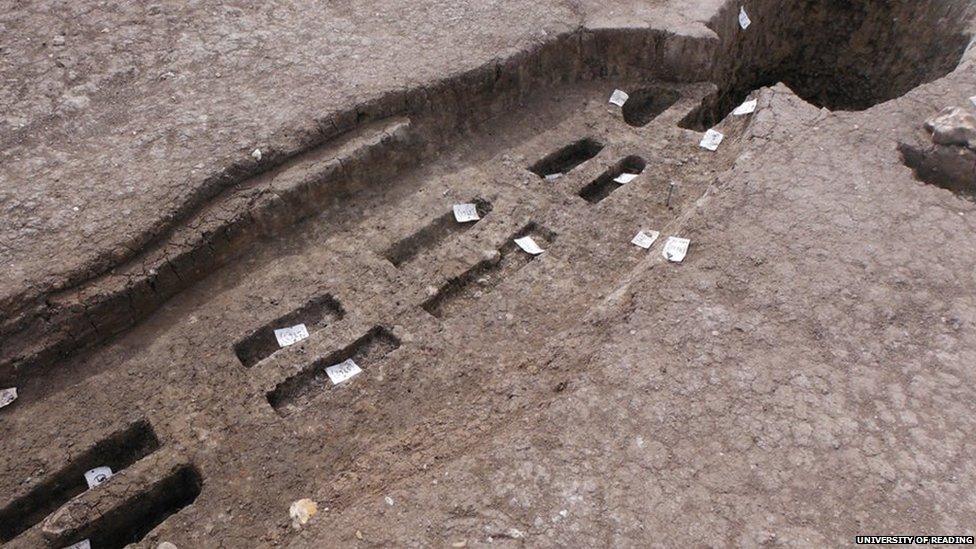
Archaeologists who uncovered the hall found its walls were built using double rows of wooden planks. It is thought the timber hall could have been used by King Ethelbert of Kent in AD597.
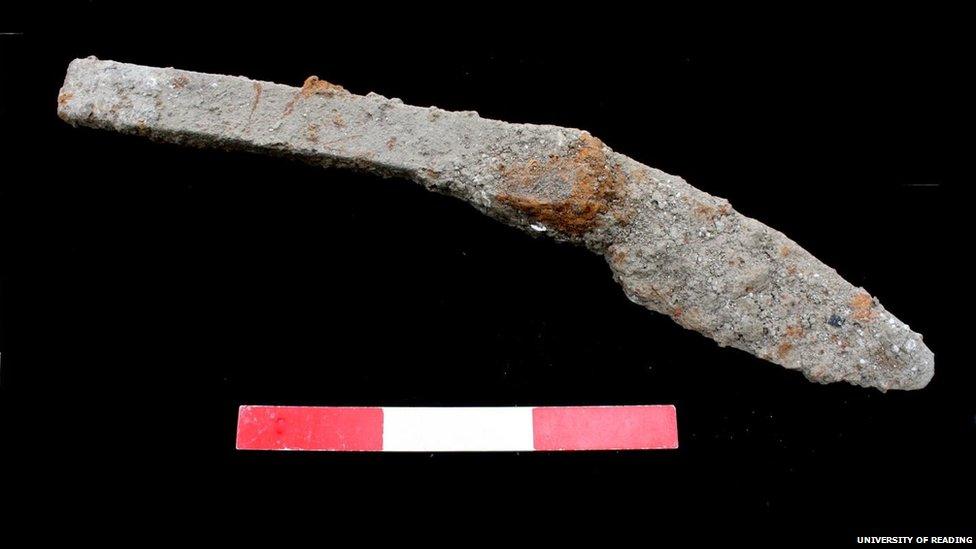
In 2010, archaeologists in Lyminge found the first evidence of occupation before the Anglo-Saxon monastery. A 7th Century iron plough coulter - which cut through the soil ahead of a plough share to increase efficiency - was excavated, suggesting that heavy ploughs were introduced to Kent centuries before other parts of England.
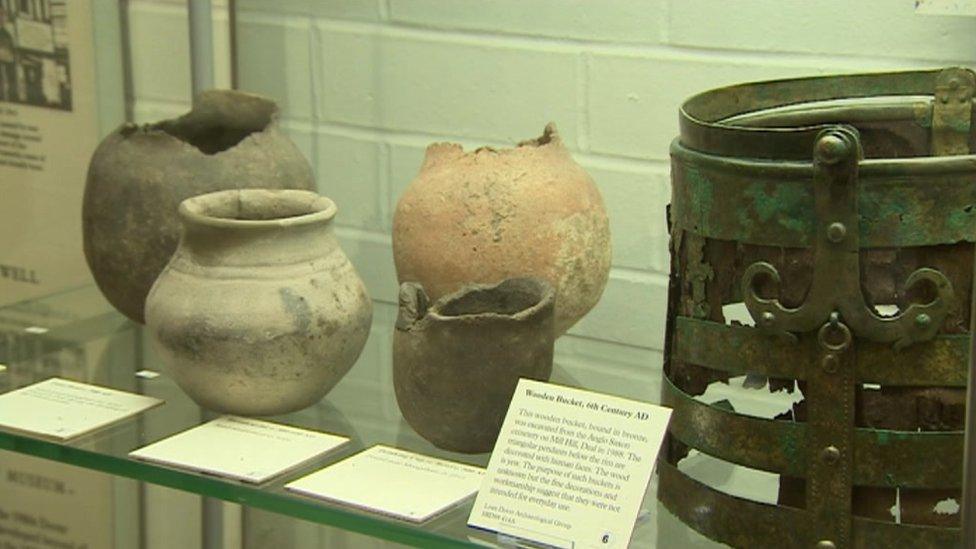
The exhibition moves to Rochester Cathedral from 13 February to 11 March next year, and will also be at Maidstone Museum during the summer.